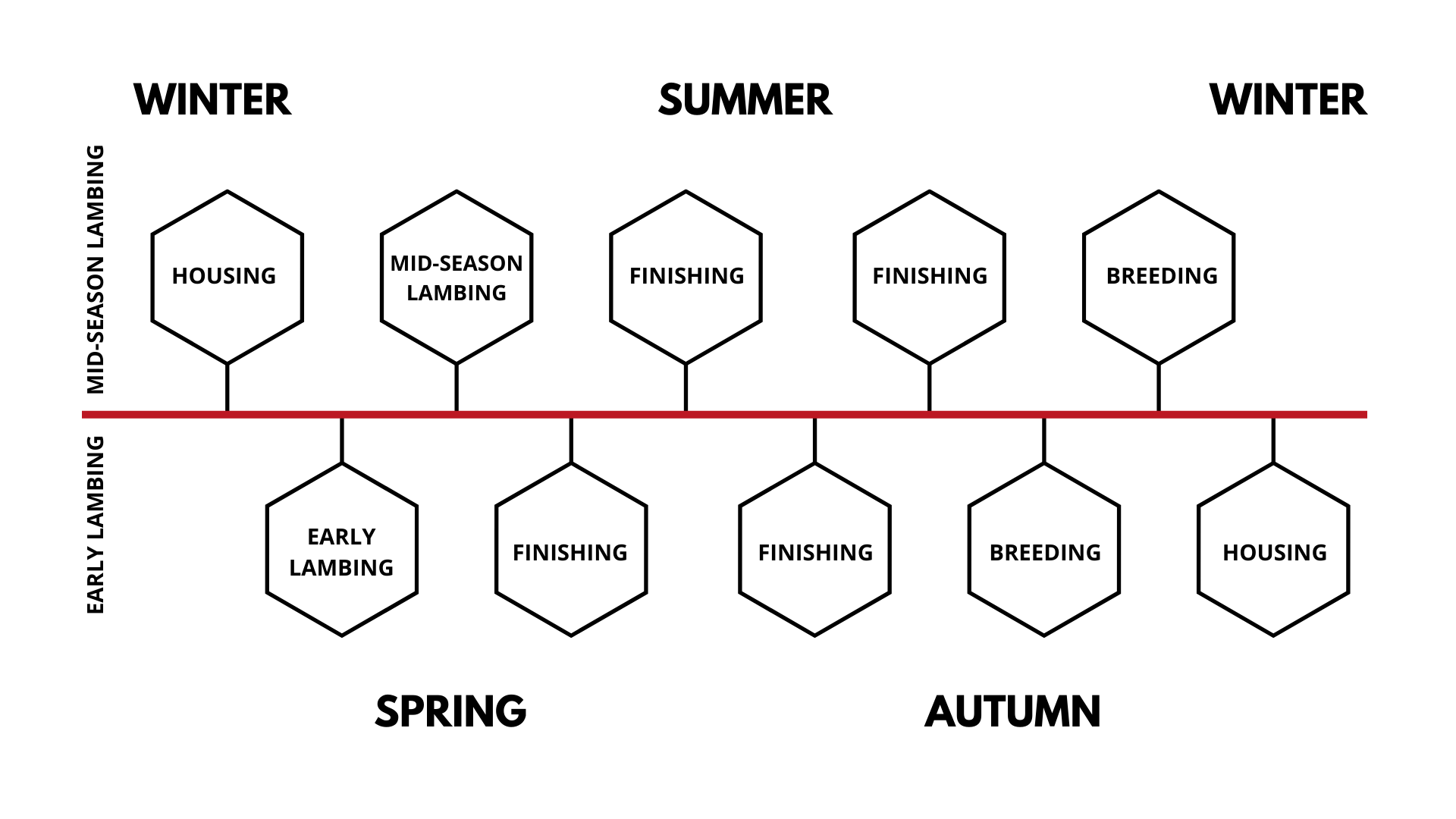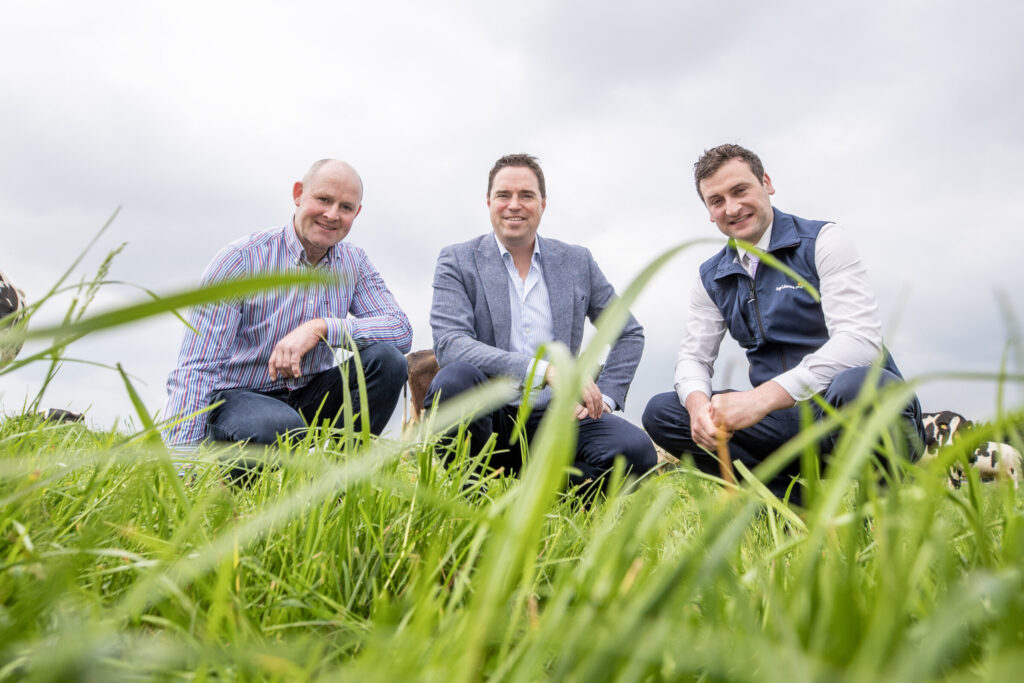Value of Irish sheep meat exports in 2023. Source: Bord Bia
Number of sheep recorded in Ireland in 2023. Source: Dept. of Agriculture, Food and the Marine
Number recorded of ewes breeding out of the overall size in the republic in 2023, with an average flock size of 108 sheep.


Irish sheep production
There are two types of sheep farming in Ireland, which is mostly grass-based:
1. Lowland sheep production
2. Hill sheep production
Springtime is the busiest time of the year for sheep farmers with lambing typically from late January to mid-March on lowland sheep flocks. Lambing on hill flocks begins later in spring and continues into April.
The gestation for a female sheep, or ewe, lasts 147 days (5 months). Sheep are seasonal breeders with autumn breeding yielding spring lambs.
Newborn lambs usually weigh 4-6kg. The target output per ewe typically ranges from 1.6-2.0 for lowland production systems. Ewes on a lowland production system will give birth to one and two lambs and some will have triplets and occasionally more. Meanwhile, hill sheep ewes tend to just produce one lamb per season.
Most lambing happens indoors to allow the farmer to keep a close eye on the ewes, and help reduce lamb mortality. It also gives lambs a chance to bond with the mother and become hardy before being let out to grass.

Diet
Much like dairy and beef farmers, Irish sheep farmers use grazed grass to make up the bulk of their sheep's diet throughout the year.
Grass is a cheap source of feed compared to other alternatives. Weather permitting, sheep can stay grazing grass longer over the course of the year compared to cattle, who are more prone to land due to poor weather conditions in early spring and late autumn.
adequate nutrition for pregnant ewes and growing lambs is always at the forefront of the sheep farmer's activities. The emphasis in Ireland for all ruminants is to consume a diet of low-cost, high-quality grass and grass derivatives (hay and silage), and not forgetting access to clean, fresh water. Ewes and (weaned) lambs can consume anything from 4-10 litres of water per day, depending on their size or stage of production.
Care of pregnant ewes
The last weeks of a ewe's pregnancy are critical. A loss of body condition can result in energy reserves being directed away from growing lambs to maintain the ewe.
The rapid growth of the lambs reduces the potential feed intake of ewes (reduced intake of bulky feed such as of silage/hay).
To provide energy to the ewe and her growing lambs and to support the production of high-quality colostrum, ewes are introduced to concentrates with a high protein content typically 6-8 weeks pre-lambing.
During these critical last few weeks of pregnancy health risks such as ewes losing body condition which can result in energy reserves being taken away from the growing lambs in order to maintain the ewes condition.
Inadequate feeding of the ewe pre-lambing can also cause other health risks, such as twin lamb disease.
Together, high quality forage and concentrates will maintain the ewe’s body condition and to ensure proper lamb growth and mammary gland and colostrum development.
In terms of concentrates fed to ewes, typically, 18-20% crude protein and mineral supplemented feed is sufficient. The quality of ingredients is also important, soya bean meal at 20% is appropriate for late pregnancy. Ewes must be introduced to concentrates slowly.
Ewe and lamb management post lambing
Receiving the mother's colostrum (first milk) is a new-born lamb's best chance of survival. It requires 50ml/kg of colostrum in the first 6 hours of life. This life-giving milk is an energy source that provides crucial antibodies and nutrients, and helps to clean out the lambs digestive tract.
Ewes and lambs will be turned out to grass 12-48 hours depending on weather conditions. For the first few weeks of life, lambs are solely dependent on the milk of their mothers for feed.
Depending on grass supplies and ewe condition, farmers may opt to feed ewes concentrates to keep up their condition and milk production so as not to harm the growth of the growing lambs.
Gradually, lambs will be introduced to concentrates in the form of creep feeding to improve lamb growth and reduce grass demand on the farm as the lamb gets older it will compete with its mother for grass supplies.
By 12 weeks of age, ewes will producing little to no milk and by then lambs will be weaned from their mothers, which is when ewe and lamb are separated.
From here, lambs will be drafted for meat production while ewes will be moved onto a low plane of nutrition followed by a high plane of nutrition in preparation for the following breeding season.

Nutritional benefits of consuming lamb
Lamb offers a number of health benefits. Firstly it is rich in protein. According to Bord Bia, an average portion of lamb contains 50% of the protein an adult needs in a day.
Lamb is naturally low in salt, high in vitamin b3 and vitamin b12 and is also a source of iron as it a red meat.



